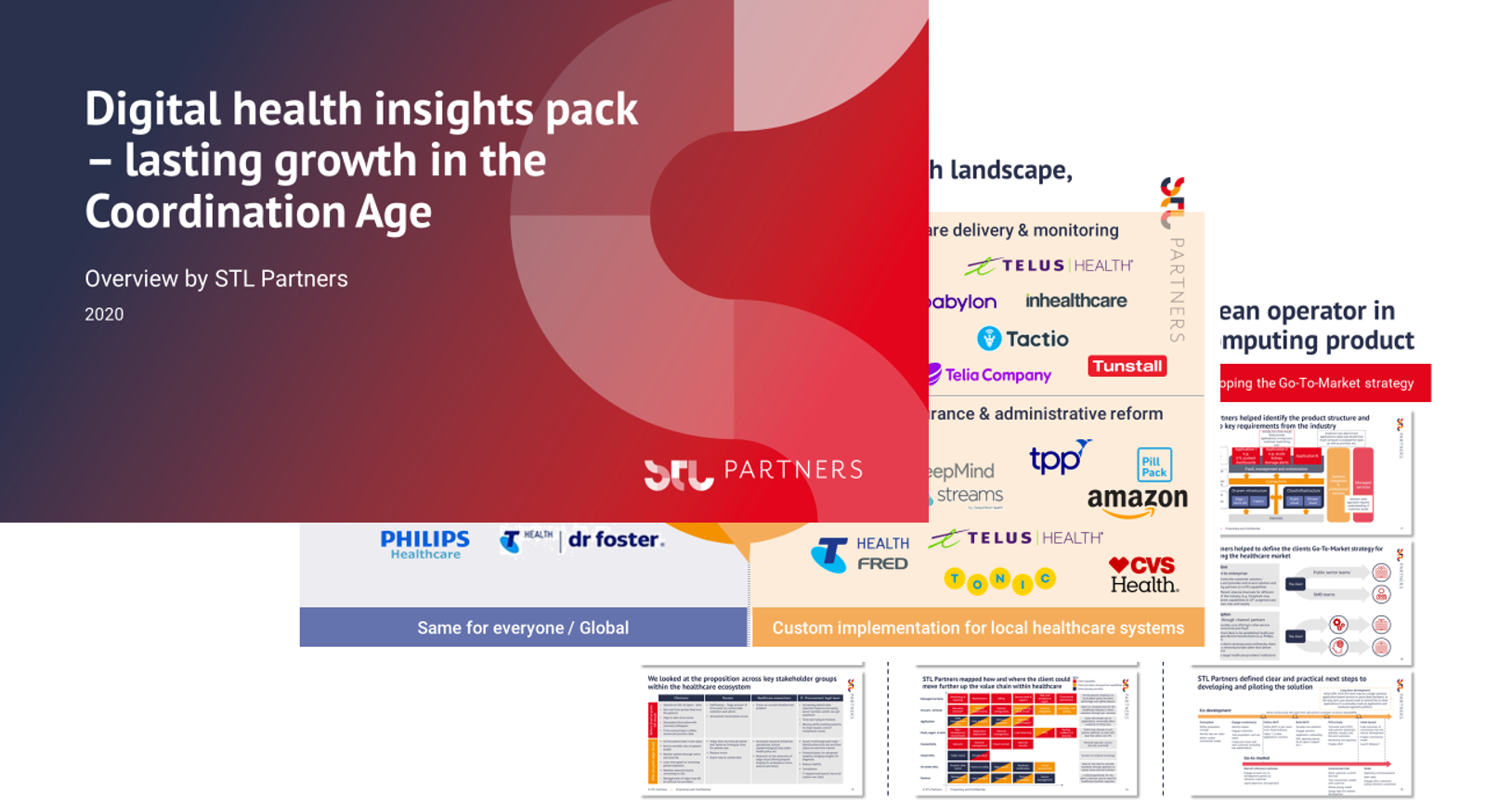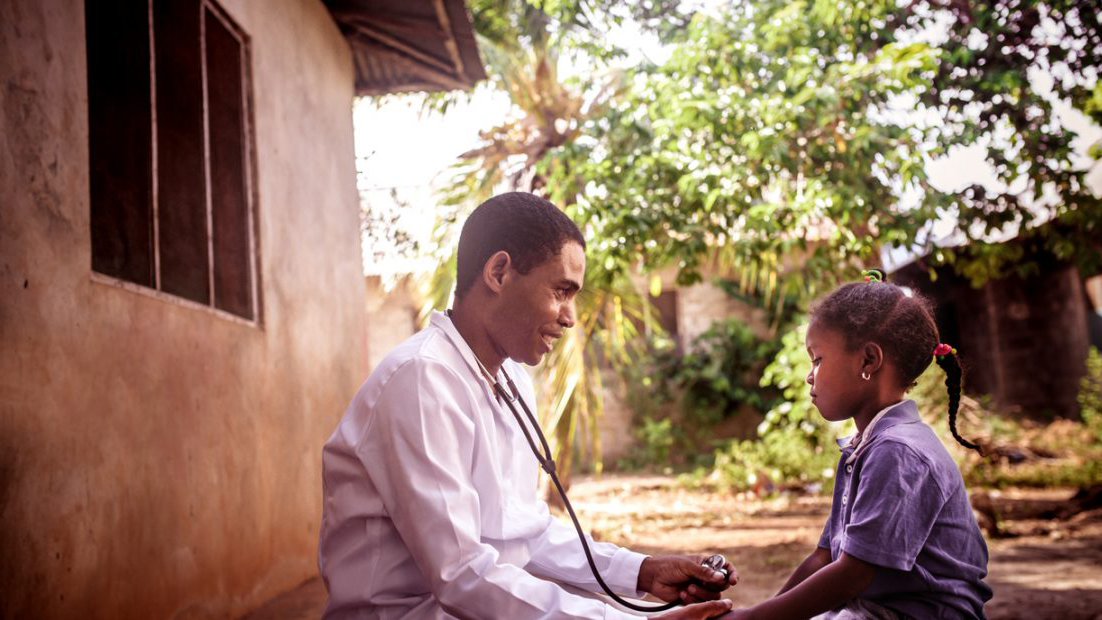How smart hospitals can improve healthcare
With growing pressures on healthcare, and governments around the world facing rising healthcare costs, smart hospitals hold the potential to drive greater efficiency, improve quality of care and provide access for more people than ever before. This article looks at a number of use cases and at what telcos are doing in this space.
The pressures on the healthcare sector are considerable, and with the growing and ageing global population, these pressures are projected to grow. The WHO estimates that there will be a shortfall of 18m healthcare workers within the next ten years and, with countries spending on average >10% of their GDP on healthcare, governments worldwide are looking for ways to keep costs from spiralling out of control, without compromising on the quality of care.
As part of increasingly integrated healthcare networks, from connected ambulances to remote care in the home, digital hospitals are emerging as ‘critical hubs’, holding the potential to drive greater efficiency, improve quality of care and provide access for more people than ever before (IBM digital hospital evolution white paper).
What is a smart hospital?
Smart hospitals look to leverage technology and data to improve processes in every part of running a hospital, including managing physical assets, sharing information, supporting staff and patients as well as delivering care. Smart hospitals have the potential to unlock insights that were not available beforehand. This is the result of greater focus on data, particularly around the spheres of collection, integration and reaching insights, for example through using AI/ML, and easy and convenient access to the data.

Smart hospital use cases: creating a digital hospital
- Asset tracking
- In-hospital patient monitoring
- Patient flow optimisation
- Optimising hospitals environment for healing
Asset tracking
Studies have shown that at least one in three nurses ‘spend an hour or more per shift searching for medical equipment to use with their patients’, and many hospitals report equipment utilisation rates of lower than 50%. In practice, this means that hospitals have excess equipment, resulting in both more upfront costs and increased maintenance costs. A Fierce Health IT study found that introducing real-time tracking of equipment resulted in an 11% reduction in time spent searching for devices. One telco that is making headway here is Telstra, with their Track and Monitor proof of concept.
In-hospital patient monitoring
In this use case, described in further detail in our article ‘Digital Health at the Edge’, patients’ vitals are tracked digitally on a system that nurses can access on mobile. This enables nurses to track more patients at once and get detailed alerts wherever they are if an issue arises with a patient. Thoughtwire have developed a systems that helps predict when patients are about to deteriorate, thus enabling preventative action, and alerts and orchestrates workflows between nurses, doctors and code teams. This would result in hospitals saving more lives, decreasing costly ICU stays and reducing the rate of readmission.
Patient flow optimisation
Smart hospitals can support the optimisation of a patient journey through a hospital, starting from in the home. Using an app, the patient would be able to ‘check while still at home, saving time and hospital resources’. The app could then send the patient a reminder when it’s getting close to the time of their appointment, as well have other functionalities, for example alerting them if their doctor/nurse is running late. On arrival, the patient can register themselves and receive their patient ID tag, after which the app can direct the patient through the hospital, while also alerting staff of the patient’s arrival. Throughout their stay/treatment programme, patients and staff can see the treatment steps and where the patient currently is in the process. Furthermore, with this digitised information on the patient journey, the hospital can learn which parts are not working well (e.g. taking too long) and change and improve processes to address those pain points.
What are examples of private LTE use cases?
Given the above benefits of private cellular networks for enterprises, the industries that are the earliest adopters are manufacturing, mining, ports and airports. Many of these sectors are characterised by being in remote locations, using wireless devices increasingly for mission critical processes and have a need to keep data secure (on-site).
STL Partners has been tracking publicly announced trials and deployments of private cellular networks. Across these four industries, there are similar use cases that are being explored, as seen in the table below. One example are automated guided vehicles, which are being used in manufacturing to transport raw materials, parts and products quickly throughout the production process. Another use case is augmented reality to aid maintenance workers during equipment inspections and repairs. The benefits of this include being able to make maintenance workers more productive, by reducing the need to wait for experts to provide assistance on-site and ensure the maintenance/repair task is done at a higher level of quality.
Optimising hospitals environment for healing
One factor that affects the healing process and speed is stress and discomfort. Smart Hospitals can improve patient care and comfort by creating a healing environment, for example through optimising buildings in areas ranging from lighting, temperature, colour schemes and others, to ensure the patient feels as comfortable as possible. In this way, the ideal conditions for patient recovery can be provided, resulting in better patient outcomes and shorter stays. STK and Yonsei University are developing a system where patients can control features such as lighting and bed position with their voice.
These are by no means an exhaustive list of improvements in a digital hospital. Others include wayfinding, nurse call, and AR/VR technology, which could be used for smart education in the hospital (for both patients and clinicians), among other uses.
What are telcos doing?
To support the needs of a more connected smart hospital, telcos could make their mark by providing connectivity, whether through 5G, or other connectivity solutions. For telcos with more ambition in healthcare, we see additional opportunities within the concept of smart healthcare and the digital hospital. For example, telcos could offer services around data management platforms and the enablement of vertical applications, such as Telstra’s Track and Monitor example given above.
BT in Birmingham, UK
The University Hospitals Birmingham NHS Foundation Trust – the largest trust in the UK – is trialling an always connected Remote Diagnostic Station to “transform the way the Trust delivers care to patients”. The station, developed by BT, “enables clinicians to work with multi-disciplinary teams and give remote clinical support using digital stethoscopes and ECGs to review and provide diagnoses for patients – away from their locations – in real-time and over a converged 4G/5G and WiFi network”. The station includes a high definition camera, which can be worn by clinicians that are accompanying the patient, enabling a clear bedside view of patients.
Helsinki Hospital’s 5G video robots
HUS Helsinki University Hospital, Finland’s largest provider of healthcare services, has teamed up with Elisa to set up the Sustainable Future Accelerator, to launch services for “a more sustainable society”. Together, they have deployed a Real-Time Locating System (RTLS) to share anonymised location data about on-site movements to help manage proximity-tracing in response to the Covid-19 pandemic. As part of their most recent trial project, they are introducing ‘5G enabled ‘video robots’’, which will enable doctors and nurses to interact with coronavirus (Covid-19) patients remotely’, with the objective to reduce their exposure to the virus. These robots connect the medical staff and the patients via video feed, and the staff can ‘drive’ the robot using a tablet computer, from anywhere inside the hospital. A prototype using the hospital’s Wi-Fi network has already be deployed and is expected to be upgraded to 5G in the coming weeks.
KT & Samsung medical centre to build 5G smart hospital
KT and Samsung are collaborating to develop a 5G smart hospital, starting with a 5G-powered medical service. For the pilot project, KT built a 5G network at the Samsung Medical Centre, creating service environments in operating and proton therapy rooms, and conducted a test operation. Based on the outcome of the project, KT and Samsung plan to continue to develop smart patient care and 5G-powered innovative medical practices to improve the operational efficiency of the hospital.
One use case this has enabled is 5G-driven pathological analysis. During surgery, tissues are taken from the patient and treated for analysis, before being sent to pathologists in an adjacent room – a process that used to take 20 minutes, thus making it difficult for pathologists to conduct on-site analyses. Fast and uninterrupted access to pathological data obtained during surgery is critical in determining the conditions of patients, is now provided through a 5G network with ultra-high speed and ultra-low latency, allowing the Pathology Department to gain access to materials, each containing about 4G of data, ensuring better medical services.
C3 (Command, Control and Communications) Smart Hospital System, Singapore
At the Tan Tock Seng Hospital in Singapore, a smart hospital that has been ten years in the making, the C3 Smart Hospital System operators like an airport control tower, displaying bed resources in a patient flow concept from admission to discharge, tracking the live location of every patient. This visualisation of patient flow means patient care can be optimised, and bottlenecks can be addressed. The hospital-wide control means that responses can be coordinated across departments. The system provides real-time visibility on patient flow, staff deployment & inventory. There now is the ambition to take it nation-wide, introducing the system across the hospitals in Singapore’s public healthcare system.
China’s BOE Hefei Digital Hospital
Chinese display maker BOE partnered with American medical group Dignity Health to build the BOE Hefei Digital Hospital. The core of this hospital system lies in the converged network, ‘which acts as the central spine for the building management system, hospital operational procedures and all aspects of patient care via IoT’ (WSP). Data and systems, from medical records to lighting systems will be linked with the converged network, thus allowing for monitoring by a single operations manager. Since the converged network allows services to interact, the potential for energy and cost-savings in this bed is high. For example, the building services are linked to the check-in system, so that heating, lighting and air conditioning can be turned on automatically when the patient arrives.
Author: Giulia Bollen Gandolfo is a Consultant at STL Partners, specialising in how to deliver B2B Services
Digital health insights pack
This 24-page document will provide you with a summary of insights from our healthcare research and consulting work:
- Key trends in the healthcare industry
- The role for telecoms: applications and business models
- Strategies for success: where to start
- How STL Partners can support you
Request the free digital health insights pack by clicking on button below:
![]()
Read more about digital health
Webinar
Telcos in health webinar
In this session Amy Cameron and Yesmean Luk looked at the opportunities for telcos in health. As a growing industry, with a national focus and significant digitisation challenges, healthcare is an attractive vertical for telcos seeking to build new revenues beyond core communications services.
Research
TELUS Health: Innovation leader case study
Healthcare is an attractive vertical for telcos to address with digital solutions. Although many telcos have made attempts to capture this opportunity, TELUS stands out as an example of the value of a long-term commitment to healthcare. In this case study, we examine TELUS’ strategy in health, evidence of its success, and draw out lessons for other telcos



